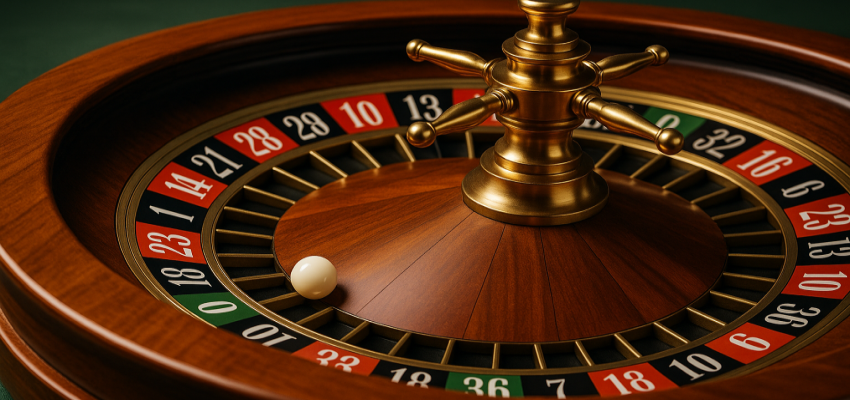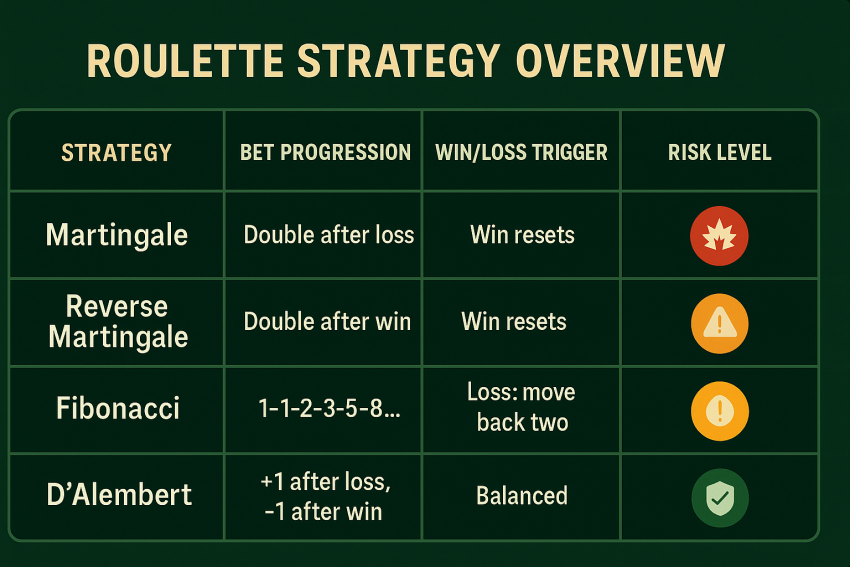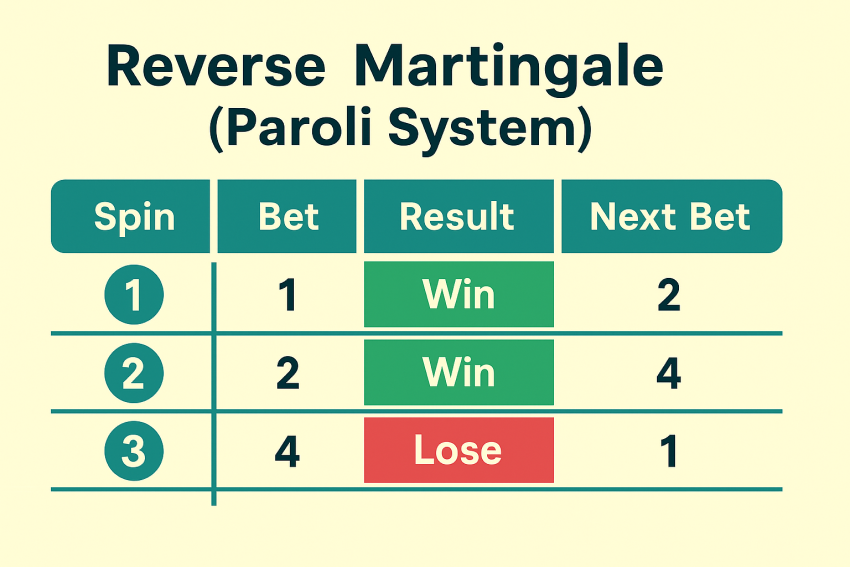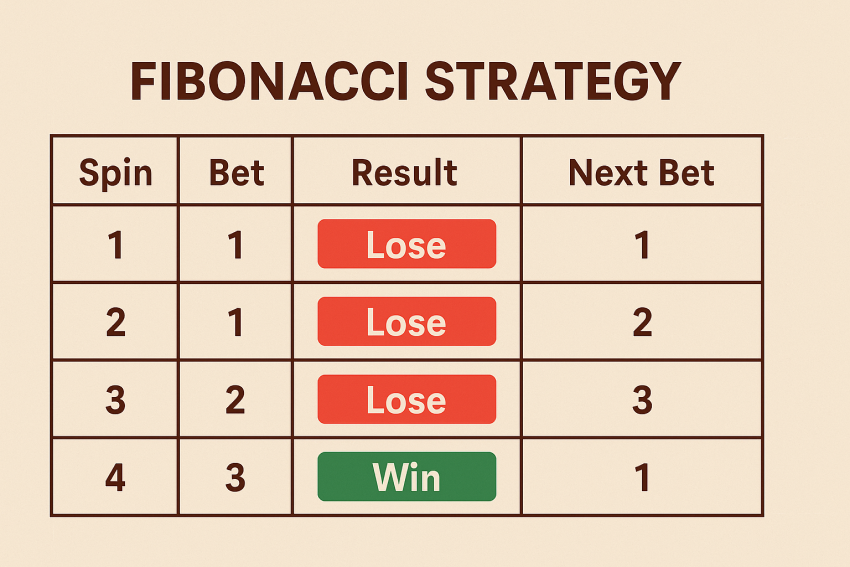The Best Roulette Strategy for Beginners

There’s something undeniably hypnotic about the spinning roulette wheel. The rhythmic click of the ball, the anticipation before it lands — and that split second where you’re sure you’ve cracked the pattern. But here’s the truth: every professional roulette player, streamer, and casino strategist started in the same place — the free tables.
Before risking real money, mastering the free roulette strategy is the smartest way to build confidence, test systems, and understand how probability and house edge interact. It’s where theory meets practice — without burning a hole in your bankroll.
In this guide, we’ll break down every major roulette strategy, explain how they differ, reveal which ones actually stand up to statistical testing, and show why “playing for free” is far more than just a beginner’s step — it’s an essential foundation for any serious player.
Which Different Strategies Are There — and How Do They Really Differ?

Roulette has been played for over 300 years, and in that time, players have invented countless betting systems designed to beat the wheel. Most of them fall into one of two main categories: progressive and flat betting strategies.
Let’s unpack the most well-known examples and what makes them unique.
1. Martingale Strategy (The Classic Double-Up System)
Concept: Double your bet after every loss until you win.
Goal: One win recovers all previous losses plus one unit of profit.
Best for: Even-money bets (red/black, odd/even).
How it works: You start with a small wager, say $1 on red. If you lose, you double to $2. Lose again, bet $4. Eventually, when red hits, you’ve recovered all prior losses and net a small profit.
The problem: It sounds foolproof, but the flaw is exponential risk. A 10-loss streak requires a $1,024 bet to win back $1. Most casinos have table limits that make it impossible to continue indefinitely — and your bankroll might not survive a long losing streak.
Verdict: Works in short bursts. Not sustainable long-term.
2. Reverse Martingale (Paroli System)

Concept: Increase your bet after a win, not a loss. Goal: Capitalize on winning streaks while limiting risk.
You start small — say $1 — and double each time you win. If you lose, reset to $1. This approach flips the risk curve: you’re pressing during good luck, not chasing losses.
Why it’s smarter: You limit exposure to prolonged losses and let hot streaks work in your favor. Why it still fails mathematically: Winning streaks end, and long-term house edge still applies.
Verdict: Excellent for free testing, moderate risk for real-money play.
3. Fibonacci Strategy

Concept: Use the famous Fibonacci sequence (1-1-2-3-5-8-13-21…) to guide bet size after losses. Goal: Recover gradually without doubling every time.
Each loss moves you one step up the sequence; each win moves you two steps back. It’s gentler than Martingale but still progressive.
Example:
| Spin | Bet | Result | Next Bet |
| 1 | 1 | Lose | 1 |
| 2 | 1 | Lose | 2 |
| 3 | 2 | Lose | 3 |
| 4 | 3 | Win | 1 |
Verdict: Safer than Martingale, but still limited by table caps and variance.
4. D’Alembert Strategy
Concept: Increase your stake by one unit after a loss, decrease it by one after a win.
Goal: Smooth, slow recovery system with less volatility.
Many beginners like D’Alembert because it feels balanced — it’s steady and psychologically easier to follow. However, the returns are small and streaks can still deplete your bankroll.
Verdict: Good beginner’s system to test in free mode before real play.
5. Labouchere (Cancellation) System
Concept: Create a sequence of numbers (e.g., 1-2-3-4-5). Bet the sum of first and last numbers (1+5=6). If you win, cross them out. If you lose, add that total to the end of the sequence.
It’s a customizable system that adapts to streaks — but can spiral quickly.
Verdict: Advanced system — test thoroughly using play-money tables before real stakes.
6. James Bond Strategy
Concept: Flat betting system that covers multiple parts of the wheel. Bet layout example (on a $200 stake):
- $140 on high numbers (19–36)
- $50 on 13–18
- $10 on 0 (insurance)
It’s more about coverage than progression, but it’s expensive and doesn’t eliminate the edge.
Verdict: Stylish, fun, and great for free testing. Just don’t expect MI6-level returns.
If you want to practice these systems risk-free and analyze their real statistical behavior over time, the best place to start is with free roulette strategy tables that mimic real-money physics and randomness without cost.
There, you can test hundreds of spins, experiment with bet layouts, and discover how often theory and reality truly align.
Which Strategy Is the Best Roulette Strategy?
The question everyone asks: Which one actually works?
The short answer: none of them can overcome the house edge. Roulette’s design mathematically favors the casino. On a European wheel (with one zero), the house edge is 2.7%; on an American wheel (with two zeros), it’s 5.26%.
No system can change that — but what the best strategy does is control your exposure, manage variance, and keep you playing longer while maximizing your fun.
The real “best” strategies focus on:
- Bankroll discipline. Never chase losses or increase bets beyond your limits.
- Session goals. Decide your win and loss limit before spinning.
- Game selection. Always choose European roulette over American.
- Testing in free mode first. Systems behave differently depending on your mindset.
For example:
- Low-risk players: D’Alembert or flat betting.
- Moderate risk: Fibonacci or Reverse Martingale.
- High variance thrill seekers: Classic Martingale or Labouchere (but only after full testing).
When playing free versions, track outcomes over at least 500–1,000 spins. Only after consistent data should you consider bringing a tested strategy to real-money play.
Why You Should Always Test Out New Strategies in Free Mode First
Imagine this: you’ve just learned the Fibonacci system. You’re feeling confident, ready to test it with £100. You hit an unlucky streak and lose five in a row. That’s half your bankroll gone — and you’ve learned nothing except that variance hurts.
Had you practiced in free mode, that streak would have cost you zero pounds — but given you valuable insight into how probability swings in roulette.
Here’s why free testing matters:
- You experience real volatility without emotional loss. You’ll understand how streaks happen and how long “bad luck” lasts.
- You can fine-tune your unit size. Testing helps you find your comfort zone before applying real stakes.
- You can log spin data. Many free roulette platforms allow spin tracking — useful for evaluating your system statistically.
- You develop emotional control. The biggest difference between casual players and pros is psychology. Free play teaches patience.
Free roulette isn’t just for beginners — many experienced players use it as a sandbox for refining advanced systems or testing new wheel variants like Lightning or Quantum Roulette.
Difference Between Free and Real Roulette (Apart from the Obvious)
At first glance, free roulette and real-money roulette look identical — same table layout, same wheel, same RNG. But under the surface, there are subtle differences that affect how you play and learn.
| Feature | Free Roulette | Real-Money Roulette |
| Risk | None | Real financial risk |
| Emotional impact | Low | High (affects decisions) |
| Pacing | Relaxed, unlimited spins | Often faster or limited by dealers |
| Bonuses | None | Welcome offers, cashbacks, loyalty perks |
| Goal | Learning, testing | Profit, entertainment |
Key takeaway:
Free roulette gives you mental distance. You can test strategies analytically, without adrenaline or panic influencing your decisions. Once you transition to real play, the goal is to keep that calm, logical mindset.
If you find your free-mode strategy collapses when money’s involved, it’s not the system that failed — it’s psychology. That’s why high-level players rehearse their approach in free mode until discipline becomes automatic.
Is the Classic Online Roulette the Best — or Are the New Versions Better?
Roulette’s digital evolution means players can now choose from a wide array of variants, each with its own pace, features, and appeal. But which should you use to refine your strategy?
Let’s break them down.
Classic Online Roulette
This is the purest version of the game. Standard wheel, standard payouts, no fancy multipliers or gimmicks.
Pros:
- Perfect for testing traditional systems (Martingale, Fibonacci, D’Alembert).
- Predictable odds and structure.
- Slower pace allows note-taking and analysis.
Cons:
- Can feel repetitive after long sessions.
- No special features or modern flair.
Best for: Deep strategy testing and statistical study.
Turbo Roulette
Designed for speed. It’s essentially the same rules but without animations or dealer pauses — perfect if you want to simulate hundreds of spins quickly.
Pros:
- Great for running system simulations fast.
- Helps you gather long-term data quickly.
- Builds pattern recognition and quick decision-making.
Cons:
- Can cause fatigue or rash betting behavior.
- Easy to lose track of sessions.
Best for: Practicing bankroll control and patience under pressure.
Lightning Roulette
A modern, visually stunning variant by Evolution Gaming, Lightning Roulette adds RNG-based multipliers (50x–500x) to random numbers each spin.
Pros:
- Adds high-volatility excitement.
- Payouts can be massive on lucky hits.
- Keeps gameplay fresh.
Cons:
- The house edge increases due to lower base payouts (30:1 instead of 35:1).
- Strategies relying on even-money bets don’t apply well.
Best for: Entertainment and testing new coverage systems (like sector betting), not traditional progression systems.
Live Roulette
Played with a real dealer via video stream, live roulette bridges the gap between online RNG and real casino play.
Pros:
- Authentic experience.
- Human pacing helps emotional training.
- Many versions (Speed, Immersive, Lightning, Salon Privé).
Cons:
- Slower sessions, not ideal for quick testing.
- Requires stable connection and patience.
Best for: Transition phase between free play and real money. Practice mindset, timing, and composure.
So Which Version Should You Master First?
If your goal is to refine strategy mechanics, start with:
- Classic online roulette for clarity and predictable math.
- Turbo roulette for stress-testing progression systems.
- Live roulette for real-world discipline.
If your goal is entertainment and variety, Lightning or Quantum variants are fun — but treat them as entertainment, not serious strategy platforms.
Building a Personal Strategy Testing Routine
To truly master free roulette strategy, you should approach it like a researcher, not a gambler. Here’s how:
Step 1: Choose a Single Variant
Pick European roulette to minimize the house edge (2.7%).
Step 2: Define Your Bankroll
Even in free mode, treat it like real money. Give yourself a virtual bankroll of $1,000.
Step 3: Set Session Goals
Example: 100 spins using Fibonacci on red. Note wins/losses, net change, max drawdown.
Step 4: Record Everything
Use a simple spreadsheet:
| Spin # | Bet | Outcome | Balance | Notes |
| 1 | $1 | Lose | $999 | Start Fibonacci |
| 2 | $1 | Win | $1,000 | Reset |
Step 5: Analyze Patterns
After 100+ spins, calculate:
- Average profit/loss per spin
- Longest losing streak
- Maximum exposure
Step 6: Refine and Repeat
Adjust bet progression or unit size based on results. Continue until your system holds up statistically.
Only then should you consider transitioning to real-money roulette — and even then, with modest stakes and disciplined exit points.
Expert Insights: What the Pros Say
Top roulette content creators and analysts agree on one thing: mastering free roulette isn’t optional — it’s the foundation.
Professional strategist Otto Bergstrom from RouletteUK.co.uk once noted:
“When you remove the emotional cost of losing, you start seeing roulette for what it really is — a game of probabilities, not luck. The players who master it in free mode end up playing smarter when the stakes are real.”
That’s the key difference between casuals and professionals — the willingness to treat free play seriously.
Common Mistakes Players Make When Practicing Free Roulette
- Clicking too fast. Free play encourages reckless speed. Slow down; analyze each spin.
- Switching systems too early. Give each system at least 200–300 spins before judging.
- Ignoring table rules. Always note min/max bets, table limits, and variant differences.
- Treating free chips like play money. The goal is realism — if you wouldn’t double $100 in real life, don’t do it here.
- Not tracking performance. Without logs, you’re gambling blindly.
From Free to Real — The Smart Transition Plan
When you’ve logged enough free sessions and identified a consistent rhythm, follow this 3-phase approach:
- Phase 1: Small-stake real play Move to $0.10–$0.50 tables. Focus on psychology and timing.
- Phase 2: Mid-stake refinement Test bankroll management under mild pressure.
- Phase 3: Real discipline Implement session goals: e.g., stop after 20% profit or 10% loss.
Your ultimate goal isn’t to “beat” roulette — it’s to play smarter, longer, and with full awareness of probability mechanics.
Final Thoughts
Mastering free roulette strategy is the secret weapon of every confident roulette player. It transforms you from a casual spinner into a methodical strategist who understands how systems behave under real-world conditions — but without losing a cent in the process.
When you can track 500 spins without emotional tilt, stick to your betting plan, and understand when to walk away, you’ve already reached a level most players never do.
Roulette is more than luck — it’s discipline, pattern analysis, and psychology. And that mastery begins long before the chips hit the felt — it begins on the free tables.